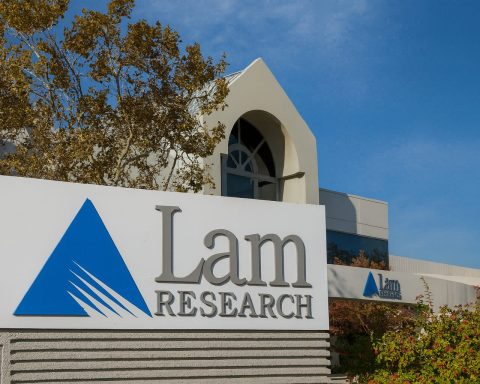- The global satellite broadband market was roughly $5–9 billion in 2023 and is forecast to reach about $24–23 billion by 2030, with an annual CAGR of 14–30%.
- North America led in 2023 with about 32% of revenues, while Asia-Pacific (~15%), Europe (~14%), Latin America (~12.5%), and Middle East & Africa (~12%) are forecast to grow fastest.
- By 2030, North America, Europe and Asia-Pacific are each projected to be in the $6–7+ billion range, with Latin America and MEA contributing several hundred million USD.
- In 2023 the regional revenues were North America $2,966.1 M, Europe $2,435.0 M, Asia–Pacific $2,264.6 M, Latin America $721.5 M and Middle East & Africa $835.6 M.
- Satellite constellations operate in three orbit classes: LEO at 160–2,000 km with ~20–50 ms latency and thousands of satellites such as Starlink, OneWeb and Kuiper.
- MEO satellites orbit roughly 2,000–20,000 km (often around 8,000 km in SES’s O3b mPOWER) and offer ~50–150 ms latency serving large regions with tens of satellites.
- GEO satellites sit at about 35,786 km, with ~500–700 ms latency and each satellite covering about one-third of the globe, used by HughesNet and Viasat high-throughput systems.
- Starlink, the fastest-growing consumer provider, has ~7,000 satellites (aiming for ~12,000), ~4 million subscribers as of 2024, delivers 50–200 Mbps down, ~20–50 ms latency, and charges roughly $90–130 per month plus a hardware fee of $349–$499 from an original $599.
- Amazon’s Project Kuiper aims for 3,236 LEO satellites with the first 27 prototypes launched in April 2025 and consumer service planned by late 2025, promising speeds up to hundreds of Mbps.
- Regulatory and infrastructure hurdles include spectrum licensing, ITAR/export controls, ground gateways, weather sensitivity, and the need for global coordination, while subsidies such as BEAD and Nevada’s $12.7 million for Kuiper to serve about 4,400 rural homes, plus Starlink subsidies in Maine/South Carolina, help affordability.
The global satellite broadband market is exploding – set to soar from just a few billion dollars today into the tens of billions by 2030. Market analyses report a global industry size of roughly $5–9 billion in 2023, with estimates ranging up to $24–23 billion by 2030 (annual CAGRs of 14–30% [1] [2]). This surge is driven by an insatiable demand for connectivity in remote and underserved areas worldwide [3] [4]. North America currently leads the market (about 32% of 2023 revenues [5]), but high growth rates are forecast in Asia-Pacific (CAGR ~15%), Europe (~14%), Latin America (~12.5%), and even the Middle East & Africa (~12%) [6] [7] [8]. By 2030, North America, Europe and Asia-Pacific markets are each projected in the $6–7+ billion range [9] [10] [11] (see Table below), with Latin America and MEA contributing several hundred million each. These trends underscore a massive addressable market for satellite connectivity solutions reaching beyond traditional urban areas.
| Region | 2023 Revenue (USD) | 2030 Forecast (USD) | CAGR (2024–30) |
|---|---|---|---|
| North America | $2,966.1 M [12] | $7,019.8 M [13] | 13.1% [14] |
| Europe | $2,435.0 M [15] | $6,094.3 M [16] | 14.0% [17] |
| Asia–Pacific | $2,264.6 M [18] | $5,981.4 M [19] | 14.9% [20] |
| Latin America | $721.5 M [21] | $1,647.8 M [22] | 12.5% [23] |
| Middle East & Africa | $835.6 M [24] | $1,828.2 M [25] | 11.8% [26] |
Figure: Regional satellite broadband market sizes (USD millions), 2023 vs 2030 [27] [28].
Satellite Constellation Technologies (LEO / MEO / GEO)
Satellite broadband today uses three orbit classes with very different performance and trade-offs. Low Earth Orbit (LEO) satellites circle just a few hundred kilometers above Earth (typically 160–2,000 km altitude) [29]. Because of the short distance, LEO constellations (e.g. SpaceX’s Starlink, OneWeb, Amazon’s Kuiper) can deliver internet with low latency (often 20–50 ms round-trip [30]) and high aggregate throughput via thousands of small satellites. The catch is that LEO systems require very large constellations – often thousands of satellites – and complex tracking user terminals to maintain continuous coverage [31].
Medium Earth Orbit (MEO) satellites occupy intermediate altitudes (~2,000–22,000 km [32], often 8,000 km for systems like SES’s O3b mPOWER). MEO offers a compromise: somewhat lower latency (50–150 ms) than GEO and a handful of satellites can cover large regions. MEO constellations (e.g. SES O3b) are used primarily for telco backhaul and enterprise connectivity [33]. Geostationary Earth Orbit (GEO) satellites reside in a circular orbit at 35,786 km altitude [34], appearing fixed in the sky. Each GEO satellite covers a third of the globe, but the high distance causes very high latency (500–700 ms) [35]. GEO systems (like HughesNet/EchoStar, Viasat) typically use high-throughput satellites (HTS) to serve broad areas, but remaining latency and signal attenuation (esp. in bad weather) are limitations [36] [37].
| Orbit | Altitude (approx.) | Latency | Coverage | Examples |
|---|---|---|---|---|
| LEO | 160–2,000 km [38] | ~20–50 ms [39] | Requires thousands of sats (dense constellations) [40] | Starlink, OneWeb, Kuiper |
| MEO | 2,000–20,000 km [41] | ~30–150 ms [42] | Tens of satellites yield wide but not full-earth coverage | SES O3b (mPOWER) |
| GEO | ≈35,786 km [43] | ~500–700 ms [44] | One sat covers ~⅓ globe (geosynchronous) | HughesNet (EchoStar), Viasat |
These technical differences are critical. LEO systems are emerging as the fastest and lowest-latency option for rural broadband, making previously impossible speeds (e.g. tens of Mbps) available where fiber cannot reach [45] [46]. In contrast, GEO satellites are established but inherently slower and rely on large ground dishes; MEO sits in between. Recent progress (e.g. laser inter-satellite links in LEO, phased-array antennas, and next-gen GEO HTS) is improving capacity and reach [47] [48].
Leading Providers and Competitive Landscape
Several major players dominate the rural satellite broadband space:
- SpaceX – Starlink: The fastest-growing consumer provider. Starlink’s LEO mega-constellation has ~7,000 satellites in orbit (with plans for ~12,000 total) [49]. It offers roughly 50–200 Mbps typical download speeds via a consumer-grade “dish” terminal, with end-to-end latency ~20–50 ms [50]. Starlink serves ≈4 million subscribers worldwide as of 2024 [51] [52], covering ~130 countries (nearly global) for homes, RVs, maritime and more. Plans cost roughly $90–130 per month (region-dependent) plus the one-time hardware fee (originally ~$599, now ~$349–$499) [53]. Starlink also offers specialized tiers (business, aviation, maritime) at higher rates with dedicated equipment, and is rolling out new services like direct-to-cell phone links [54].
- Amazon – Project Kuiper: An emerging LEO competitor. Backed by a $10 billion investment, Project Kuiper aims to deploy 3,236 LEO satellites [55]. The first 27 prototypes launched in April 2025 [56], with consumer service planned by late 2025. Kuiper promises speeds up to hundreds of Mbps via compact terminals [57]. Pricing details are not public yet, but analysts expect Amazon to leverage its retail ecosystem (potentially bundling with Prime/AWS) to drive adoption. Several U.S. states (e.g. Nevada, Louisiana) are already reserving portions of rural subsidy funds (BEAD) specifically to pay for Kuiper service [58].
- OneWeb (Eutelsat OneWeb): A UK/Europe-led LEO provider targeting enterprise and wholesale markets. OneWeb has ~618 satellites at ~1,200 km altitude [59] [60]. It achieved global coverage in 2023 and recently merged with satellite giant Eutelsat to offer combined GEO+LEO solutions. Unlike consumer-focused rivals, OneWeb sells capacity in bulk to telecom operators, governments and businesses (e.g. mobile backhaul for rural carriers, maritime/aviation connectivity). It has strategic partnerships (e.g. AT&T, Intelsat for inflight Wi-Fi) and a customer backlog of roughly €700 million by late 2023 [61]. Typical OneWeb speeds (~50–100 Mbps) and latencies (~70–100 ms) are lower/longer than Starlink, but the service is oriented to backbone and institutional use cases [62].
- Traditional GEO providers (Viasat, HughesNet, others): Existing satellite Internet companies remain significant, especially in the Americas. Viasat (including ViaSat-3 GEO HTS) offers up to ~100 Mbps in many regions, with near-global coverage via three Ka-band satellites [63] [64]. HughesNet (EchoStar) serves over 1 million mostly-U.S. homes with plans up to ~25 Mbps [65] [66]. These legacy players sell fixed plans (often with data caps) starting around $50/month for limited data [67]. Their strengths are proven infrastructure and affordability of basic service; their weaknesses are higher latency (~600 ms) and often lower speeds than LEO. Notably, Hughes has invested in OneWeb, signaling an eventual hybrid GEO+LEO strategy.
- Other entrants: Several other constellations are emerging. Canadian Telesat plans a “Lightspeed” LEO network targeting enterprise (launch late 2020s). China is developing its own LEO system (“Hongyan”/“GuoWang”) for domestic rural coverage. Even specialized “direct-to-cell” satellite services (AST SpaceMobile, Lynk) aim to let ordinary cell phones connect via LEO satellites, which could transform remote mobile coverage in the future.
A comparative snapshot of key providers is shown below:
| Provider (Owner) | Orbit / Constellation | Coverage & Users | Focus & Speed | Pricing |
|---|---|---|---|---|
| Starlink (SpaceX) | ~7,000 LEO satellites (aim 12k+) [68] | Global (≈130 countries); ~4M users [69] [70] | Residential/roam (50–200 Mbps; ~20–50 ms) [71] | ~$90–120/mo; $349–599 kit [72] |
| OneWeb (Eutelsat) | 618 LEO satellites [73] | Global (incl. Arctic) [74]; B2B only (telcos, govts) | Wholesale backhaul (~70–100 ms latency) [75] | Pricing via partners (no retail) |
| Kuiper (Amazon) | 27 launched LEO (target 3,236) [76] | U.S./Americas initial; global planned | Consumer/business (expected 100+ Mbps) | TBD (likely service bundles) |
| Viasat (ViaSat/Inmarsat) | 3 GEO Ka-band (ViaSat-3) [77] | ~99% of population (Americas, EMEA, APAC) [78]; ~0.26M subs [79] | Fixed & aero (~100 Mbps; ~600 ms) [80] | ~$50–200+/mo (plan-dependent) |
| HughesNet (EchoStar) | GEO (EchoStar Jupiter satellites) | Americas (U.S., Latin America); ~1M subs [81] [82] | Residential (~25 Mbps; ~600 ms) [83] | ~$50 (10GB) to ~$150 (unlimited) [84] |
Each provider targets different market niches, but all compete to reach rural areas. Starlink’s aggressive expansion has made it the de facto leader (especially for individual consumers) [85]. Amazon’s and others’ rapid deployment will intensify price/speed competition. Legacy GEO players still hold the “affordability” crown in many markets, though their growth is limited without faster speeds. Partnerships between LEO and GEO operators (e.g. OneWeb+Eutelsat, Hughes+OneWeb) are blurring boundaries.
Pricing, Subsidies and Affordability
Satellite service pricing is a critical factor for rural adoption. Consumer monthly fees vary widely: basic GEO plans start around $50–60 per month (for limited data), while unlimited LEO plans run $90–130+ per month [86] [87]. Equipment costs (user terminals/antennas) have traditionally been a barrier: e.g. Starlink dishes were ~$599, though discounts and leasing options are emerging [88]. Even at these prices, many households find satellite costly compared to fiber or DSL.
Governments and programs are intervening to improve affordability. In the U.S., the BEAD rural broadband fund (originally fiber-focused) has been made technology-neutral, allowing states to subsidize satellite service [89]. For instance, Nevada will use ~$12.7 M to subsidize Project Kuiper service to ~4,400 rural homes, and Maine/South Carolina have state programs covering Starlink subscriptions for qualifying addresses [90] [91]. Such subsidies can cut rural user costs significantly, since laying fiber to remote areas often costs six-figure sums per home [92].
Industry trends show rising subscriptions but still modest penetration overall. Roughly 4–5 million people worldwide subscribe to satellite internet as of 2024 [93] (Starlink itself has ~4M users [94]). For rural regions, early adopters are often high-need (e.g. farms, remote schools, resource industries) or benefit from subsidy programs. Prices may continue to fall as scale and technology improve: LEO competition promises cheaper customer terminals and cheaper gigabyte costs. But analysts caution that, even with subsidies, satellite typically remains more expensive and data-limited than urban broadband alternatives [95].
Regulatory and Infrastructure Challenges
Deploying satellite broadband globally faces complex regulatory and infrastructure hurdles:
- Spectrum Licensing: Satellites require radio spectrum (Ku-band, Ka-band, etc.) and orbital slots, which are tightly regulated internationally. Providers must secure licenses in each country they serve, often dealing with heterogeneous rules and strict usage limits. Managing spectrum allocation and avoiding interference is a major challenge [96] [97]. For example, crowded orbits require careful coordination to prevent collisions and ensure sustainability [98].
- National Regulations: Countries vary widely in satellite policy. Some governments (e.g. India, Brazil) actively restrict or tax foreign satellite services in favor of local initiatives; others streamline approvals for LEO constellations. Compliance with data, privacy and telecom regulations can limit service offerings. Export controls (e.g. U.S. ITAR) also affect satellite hardware distribution. Overall, regulatory friction can slow rollout in certain markets.
- Infrastructure Limits: While satellites bypass the need for terrestrial fiber, there are still “ground” infrastructure needs. High-capacity ground stations/gateways must connect satellites to the Internet backbone; building these in remote regions can be costly. User terminals (dishes or phased-array antennas) must be manufactured, shipped, installed, and powered – a logistical hurdle in hard-to-reach areas [99]. Weather sensitivity (rain fade) and line-of-sight obstructions can degrade service reliability (especially for GEO/Ka-band systems) [100]. NTCA (the rural telco association) warns that satellites are not direct substitutes for wired broadband in terms of reliability, security and uninterrupted capacity [101].
- Global Coordination: Unlike terrestrial ISPs, satellite providers are inherently international. Cross-border coordination is needed to allow roaming service and to avoid signal spillover. Multi-lateral agreements (like ITU coordination of frequencies) are crucial. The global scale of projects (Starlink and Kuiper seek essentially world-wide service) means even local regulatory shifts (e.g. spectrum auctions) can have far-reaching effects.
Despite these hurdles, many governments view satellite as a key solution for last-mile connectivity. For instance, some nations are integrating satellites into national broadband targets or allowing VSAT (very small aperture terminal) usage for schools and clinics. The long lead-times for satellites (years to build and launch) contrast with rapid terrestrial upgrades, but the political will and funding now favor a multi-technology “all hands on deck” approach [102] [103].
SWOT Analysis
Strengths: Satellite broadband’s main strength is universal reach. Satellites can cover virtually any geography, connecting homes, farms, remote schools or disaster zones where fiber never comes [104] [105]. Modern LEO constellations deliver high speeds and low latency, making them comparable to terrestrial broadband. The technology also provides resilience – for example, it remains available during natural disasters that knock out ground infrastructure. Finally, strong industry growth and government subsidies (BEAD, global digital initiatives) are fueling investment and partnerships, giving satellite providers significant resources to expand.
Weaknesses: High capital and operating costs remain a drawback. Building and launching thousands of satellites is hugely expensive, and these costs (plus ground equipment) are passed to consumers. Data capacity per satellite is finite, so per-subscriber throughput and usage allowances are often limited (especially in GEO systems) [106]. Latency for GEO services is another weakness, limiting real-time applications. The market also has “gaps” in awareness and skills: many rural users and local carriers must learn how to integrate satellite into their offerings, which can slow adoption.
Opportunities: The global unserved market is enormous. Roughly 2–3 billion people worldwide lack fixed broadband; many are prime candidates for satellite internet. Industrial sectors – maritime, aviation, oil/gas, mining, agriculture – increasingly rely on real-time data and see satellites as enabling technology. Technological opportunities include new satellite designs (optical crosslinks, software-defined payloads), and complementary innovations (direct-to-device). Furthermore, partnerships with local ISPs or mobile networks allow hybrid services (e.g. 5G backhaul via satellites). In emerging markets, governments are encouraging satellite projects (for example, low-orbit constellations in India and Africa) to leapfrog decades of terrestrial build-out.
Threats: The biggest threat is competition – both from within and outside the industry. Within satellite, multiple mega-constellations (Starlink, Kuiper, Lightspeed, GuoWang, etc.) will compete fiercely, potentially fragmenting the market or igniting a price war. Outside, terrestrial technologies continue to advance: Fixed Wireless Access (FWA) using 5G, low-cost fiber solutions, and even high-altitude platforms (drones or balloons) could erode the unserved market. Economic risks include rising launch costs or supply-chain constraints. Regulatory or geopolitical shifts (e.g. spectrum reallocation, export restrictions) could also impact global operations. Finally, environmental and space‐traffic concerns (e.g. astronomy interference, space debris) are emerging issues that could provoke restrictions on satellite deployments.
In summary, SWOT for the rural satellite broadband industry can be tabulated as:
- Strengths: Global coverage; fast modern LEO speeds; government/industry support; resilience in disasters.
- Weaknesses: High costs (infrastructure and user equipment); latency/throughput limits (esp. for GEO); regulatory complexity.
- Opportunities: Huge unmet demand; industrial/maritime/aviation use cases; new tech (laser links, 5G backhaul); policy support (subsidies, digital inclusion goals).
- Threats: Terrestrial and alternative connectivity solutions; market saturation among competitors; regulatory/spectrum risks; environmental concerns.
Conclusion
Satellite broadband is on the cusp of a rural connectivity revolution. Market forecasts unanimously predict a multi-billion-dollar industry by 2030 [107] [108], driven by low-orbit constellations and supportive policies. Africa, India, Latin America and other underserved regions represent vast new markets. As SpaceX’s Starlink, Amazon’s Kuiper and others launch ever more satellites, rural families and businesses will have real broadband options for the first time. However, realizing this potential will require navigating costly infrastructure builds, complex regulations, and ensuring the technology is affordable for low-income communities [109] [110]. If these challenges can be met, satellite internet could dramatically accelerate global digital inclusion and transform rural economies – truly bringing broadband from the stratosphere to the farm.
Sources: Industry reports and analyses (NextMSC, Grand View, RnM) and news coverage provide market sizing and growth projections [111] [112] [113]. Technical and competitive data are drawn from industry blogs and publications (Telarus, TS2 Space, ViaSat, TechTarget) [114] [115], regulatory news (NAM, Bloomberg, NTCA) [116] [117] [118], and provider statements (TechTarget, news releases) [119] [120]. These sources together illustrate the comprehensive landscape of satellite broadband’s rural market through 2030.
References
1. www.nextmsc.com, 2. www.globenewswire.com, 3. www.globenewswire.com, 4. nam.org, 5. www.grandviewresearch.com, 6. www.grandviewresearch.com, 7. www.grandviewresearch.com, 8. www.grandviewresearch.com, 9. www.grandviewresearch.com, 10. www.grandviewresearch.com, 11. www.grandviewresearch.com, 12. www.grandviewresearch.com, 13. www.grandviewresearch.com, 14. www.grandviewresearch.com, 15. www.grandviewresearch.com, 16. www.grandviewresearch.com, 17. www.grandviewresearch.com, 18. www.grandviewresearch.com, 19. www.grandviewresearch.com, 20. www.grandviewresearch.com, 21. www.grandviewresearch.com, 22. www.grandviewresearch.com, 23. www.grandviewresearch.com, 24. www.grandviewresearch.com, 25. www.grandviewresearch.com, 26. www.grandviewresearch.com, 27. www.grandviewresearch.com, 28. www.grandviewresearch.com, 29. www.telarus.com, 30. www.telarus.com, 31. www.telarus.com, 32. www.telarus.com, 33. www.ses.com, 34. www.telarus.com, 35. www.telarus.com, 36. www.telarus.com, 37. broadbandbreakfast.com, 38. www.telarus.com, 39. www.telarus.com, 40. www.telarus.com, 41. www.telarus.com, 42. www.telarus.com, 43. www.telarus.com, 44. www.telarus.com, 45. www.telarus.com, 46. ts2.tech, 47. ts2.tech, 48. www.ses.com, 49. ts2.tech, 50. ts2.tech, 51. ts2.tech, 52. broadbandbreakfast.com, 53. ts2.tech, 54. ts2.tech, 55. www.techtarget.com, 56. www.techtarget.com, 57. www.techtarget.com, 58. nam.org, 59. ts2.tech, 60. ts2.tech, 61. ts2.tech, 62. ts2.tech, 63. ts2.tech, 64. ts2.tech, 65. ts2.tech, 66. ts2.tech, 67. broadbandnow.com, 68. ts2.tech, 69. ts2.tech, 70. broadbandbreakfast.com, 71. ts2.tech, 72. ts2.tech, 73. ts2.tech, 74. ts2.tech, 75. ts2.tech, 76. www.techtarget.com, 77. ts2.tech, 78. ts2.tech, 79. advanced-television.com, 80. ts2.tech, 81. ts2.tech, 82. ts2.tech, 83. ts2.tech, 84. broadbandnow.com, 85. ts2.tech, 86. ts2.tech, 87. broadbandnow.com, 88. ts2.tech, 89. nam.org, 90. nam.org, 91. nam.org, 92. nam.org, 93. broadbandbreakfast.com, 94. broadbandbreakfast.com, 95. broadbandbreakfast.com, 96. telecomworld101.com, 97. telecomworld101.com, 98. telecomworld101.com, 99. ts2.tech, 100. broadbandbreakfast.com, 101. broadbandbreakfast.com, 102. nam.org, 103. telecomworld101.com, 104. www.ses.com, 105. nam.org, 106. broadbandbreakfast.com, 107. www.nextmsc.com, 108. www.globenewswire.com, 109. broadbandbreakfast.com, 110. nam.org, 111. www.nextmsc.com, 112. www.grandviewresearch.com, 113. www.globenewswire.com, 114. www.telarus.com, 115. ts2.tech, 116. nam.org, 117. www.bloomberg.com, 118. broadbandbreakfast.com, 119. www.techtarget.com, 120. ts2.tech










